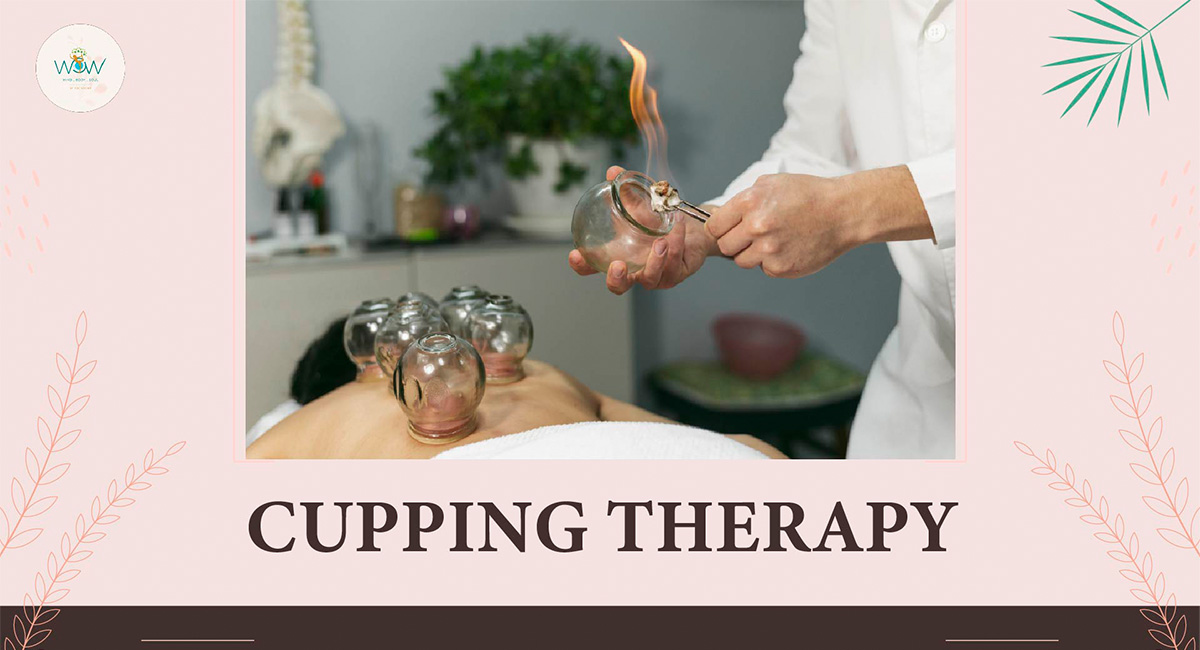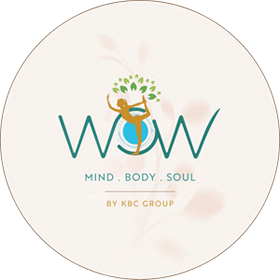
Cupping Therapy Explained: Detox, De-Stress, and Recharge Naturally
Cupping therapy is an ancient healing practice that has been used for centuries to treat various ailments. Rooted in Traditional Chinese Medicine (TCM), and Middle Eastern, and Egyptian healing traditions, this time-tested therapy has gained widespread acceptance in modern wellness, alternative medicine, and sports recovery.
In recent years, cupping therapy has become increasingly popular among athletes, fitness enthusiasts, and those seeking natural healing. This holistic treatment is known for its ability to relieve muscle soreness, improve blood circulation, and promote deep relaxation.
Whether you’re familiar with Hijama cupping or considering adding it to your wellness routine, this guide will help you understand how it works, its benefits, and what to expect during a session.
What Is Cupping Therapy?
Cupping therapy is an ancient healing practice whereby therapeutic cups create suction on the skin. The process stimulates blood flow, enhances circulation, eases muscle tension, detoxifies, and promotes overall well-being. The suction component of cupping draws the skin and the layer beneath upward, creating negative pressure that pulls oxygenated blood into the treated areas.
Unlike conventional medical treatment, which is termed medical by treatment with medication, cupping therapy is a holistic form of non-invasive therapy based on the natural healing power of the body. Practised for thousands of years, cupping therapy is widely used for pain relief and does work.
Of immense popularity in alternative medicine, sports recovery, and wellness clinics across the world, professional athletes, and fitness enthusiasts for faster recovery, while people who suffer chronic pain or stress use it to counter such tense states.
Moreover, in Islamic medicine, cupping therapy, popularly known as Hijama therapy, is considered prophetic medicine for its efficacy in detoxifying the body and restoring balance among the body systems.
Historical Roots of Cupping Therapy
Cupping therapy has been practiced for the last 3,000 years in various cultures: its origins can be traced to ancient Chinese, Middle Eastern, Egyptian, and Greek medicine. Every civilization has acknowledged its unique potential for healing, tailoring the work in line with each of its medical philosophies.
Traditional Chinese Medicine (TCM): Cupping therapy in Traditional Chinese Medicine (TCM) has found the idea of bringing balance to the energy (Qi) within the body. Ancient Chinese healers thought suction from cupping could alleviate stagnation and restore healthy Qi circulation, ultimately healing the body. To date, many practitioners of TCM further supplement acupuncture with cupping therapy to enhance healing.
Middle Eastern & Islamic Medicine: In the Middle East, cupping therapy is deep-rooted in Islamic medicine and is referred to as Hijama therapy. Hijama is mentioned in the teachings of the Quran as prophetic medicine, which very well explains why many practising Muslims have incorporated it into their alternative wellness rituals. Traditionally performed on specified lunar dates with the belief in overall health benefits
Egyptian & Greek Medicine: Cupping was embraced by the ancient Egyptians, as substantiated by records found in the Ebers Papyrus, one of the oldest medical texts dating back to 1550 B.C.E. Cupping was a treatment of choice for several ailments including fever, pain, and menstrual disorders. The Greeks, known as the father of modern medicine, further developed cupping therapy for musculoskeletal pain, digestive issues, and diseases of the lungs.
Today, cupping is popular as a complementary form of medicine among alternative medicine practitioners, as well as among physiotherapists, chiropractors, and specialists in sports medicine.
Types of Cupping Therapy
Cupping therapy is not a one-size-fits-all treatment, as there are different concepts used for different health concerns and body conditions. Knowing the types of cupping therapy will help to put in selection of the best type to use in your case.
1. Dry Cupping
This is one of the most common forms of cupping therapy. Cups are applied to the skin, and suction is created either via heat or a manual pump. There is no extraction of blood in this type. It is therefore a good choice for muscle angst, circulation enhancement, and relaxation.
Best for:
- Muscle stiffness and pain relief
- Stress reduction
- Improving blood circulation
2. Wet Cupping (Hijama Therapy)
Wet cupping, or Hijama therapy, is more intensive and entails making small incisions in the skin before applying suction. The purpose of cupping is to remove stagnant blood and surrounding toxins, which are believed to some extent to cleanse the body and enhance general health. In Islamic tradition, Hijama cupping therapy is a form of prophetic medicine, as it is performed for spiritual and physical benefits.
Best for:
- Detoxification and removing toxins
- Enhancement of immunity
- Relieving chronic pain
3. Fire Cupping
Fire cupping is a traditional Chinese medicine technique wherein a flame is used to create suction inside a glass cup before it is placed on the skin. As the air inside cools, a vacuum is formed that draws the skin upward. Firmer penetrates deeper than dry cupping. Proficiency with Fire Cupping moves those more tightly knotted areas into tight suspension beneath the skin. Stretching or cooling muscles after this treatment often feels great.
Best for:
- Deep tissue relief
- Reduction of inflammation
- Restoration of energy flow
4. Silicone or Massage Cupping
Unlike the former methods, cupping massage uses soft silicone cups allowing the therapists to glide the cups over the skin. In other respects, suction is combined with movement for a gentle yet effective massage-like action. It is widely used in beauty and spa treatments to make the skin tightly elastic and smooth and reduce cellulite while enhancing lymphatic drainage.
Best for:
- Aches and stress relief
- Skin tightening and reduction in cellulite
- Lymphatic drainage
How Cupping Therapy Works
Cupping therapy functions by inducing suction in isolated areas of the body with cups made of glass, plastic, or silicone. Suction thus creates negative pressure against the skin’s and tissues’ surfaces, stimulating circulation and minimizing muscular stress. Depending upon the effect desired by a practitioner, a static type of cupping therapy can be done (staying with cups in place) or a dynamic type, in which multiple or one cup is moved over the skin in a massage-like pulse.
The Science Behind It:
Cupping therapy attacks therapeutic effects equally through increased blood circulation, lymphatic drainage, and manipulation of connective tissues. Here are details of the scientific mechanisms behind the benefits:
- Improved blood circulation– The suction of cupping expands the blood vessels to enhance circulation, thus supplying more oxygen and nutrients to the tissues and removing metabolic waste from them. This is particularly beneficial to athletes, those with poor blood circulation, and chronic fatigue sufferers.
- Detoxification & Lymphatic Drainage- The cupping therapy stimulates the lymphatic system to flush out toxins and stagnant fluids. This detoxification is useful for individuals who are subject to pollution, processed food, or have a very high-stress lifestyle.
- Muscle relaxation and pain relief– Negative pressure created by the cups loosens tight muscles and fascia(connective tissue), reducing tension and improving flexibility. This makes cupping therapy effective in treating back pain, neck stiffness, and sports-related muscle soreness.
- Trigger point therapy- Cupping therapy is much like a deep tissue massage in that it releases muscle knots and trigger points. The suction effect directly targets pain and inflammation deep within the tissue, effectively relieving the conditions of tension-type headaches, fibromyalgia, and arthritis.
- Skin and collagen boosting- Increased blood flow also adds to collagen production so that skin-tightness, wrinkle reduction, and a rosy glow can all follow. This is the reason cupping for massage therapy is often used in beauty and anti-ageing treatments.
- Optimization of energy flow (Qi)– According to Traditional Chinese Medicine, cupping therapy clears the energy pathways(meridians) and the corresponding balance around the body. It is thought that this particular balance of energy promotes mental acuity, emotional stability, and general well-being. The effects of cupping therapy may extend for several days to several weeks depending on the person in question, and the types of cupping practiced.
Cupping Therapy vs. Massage: Which One Is Better?
Cupping therapy and massage therapy are both beneficial for the body in many ways, but they do differ in technique and purpose. Here is a rundown of the two:
- Technique: Cupping therapy employs hi-tech suction methods to lift the skin and underlying tissue while massage therapy involves kneading those tissues with pressure, hence relieving tension in aching muscles.
- Depth of Treatment: Cupping therapy penetrates more deeply into tissues and can do much more in the treatment of chronic pain and muscle recovery than massage, which is more involved with muscles that are working on the surface level of relaxation.
- Detoxification: Cupping facilitates active detoxification through lymphatic stimulation and Hijama (wet cupping), whereas massage helps in increasing the overall function of the body but provides indirect detoxification.
- Pain Relief: Cupping therapy targets deep-seated tension and inflammation, thus being of great benefit to athletes, chronic pain patients, and those with fibromyalgia. Massage therapy, although therapeutic in its own right, typically does not penetrate muscle as deeply.
- Recovery: Massage is better for relaxation and stress relief recovery. Cupping will enhance recovery from strenuous activities by improving the blood flow and therefore delivery of oxygen and other nutrients within tissues.
- Skin & Beauty Benefits: By stimulating blood circulation beneath the skin, cupping therapy can improve skin elasticity, help reduce cellulite, and boost collagen production. Massage therapy improves the texture of the skin, although not quite to the same extent as the production of collagen itself. Along with cupping therapy, we offer tailored facials to meet your skin’s needs and help it glow.
If it’s deep tissue healing, detoxification, or pain relief, cupping is the better option. But if you want a soothing, relaxing treatment offered with the intent of relieving stress and tension, massage may well be your choice. Along with the Cupping therapy, We offer a comprehensive range of therapeutic massage to make your body more relaxed.
Conclusion
Cupping is more than just the latest trend- it has an extensive history as an age-old treatment with benefits that are backed by science. Whether you need stress relief, detoxification, or pain management, Hijama cupping therapy is sure to change the game for you.
Want to try cupping therapy? Schedule a session today and start that change to a healthier, more relaxed you!

